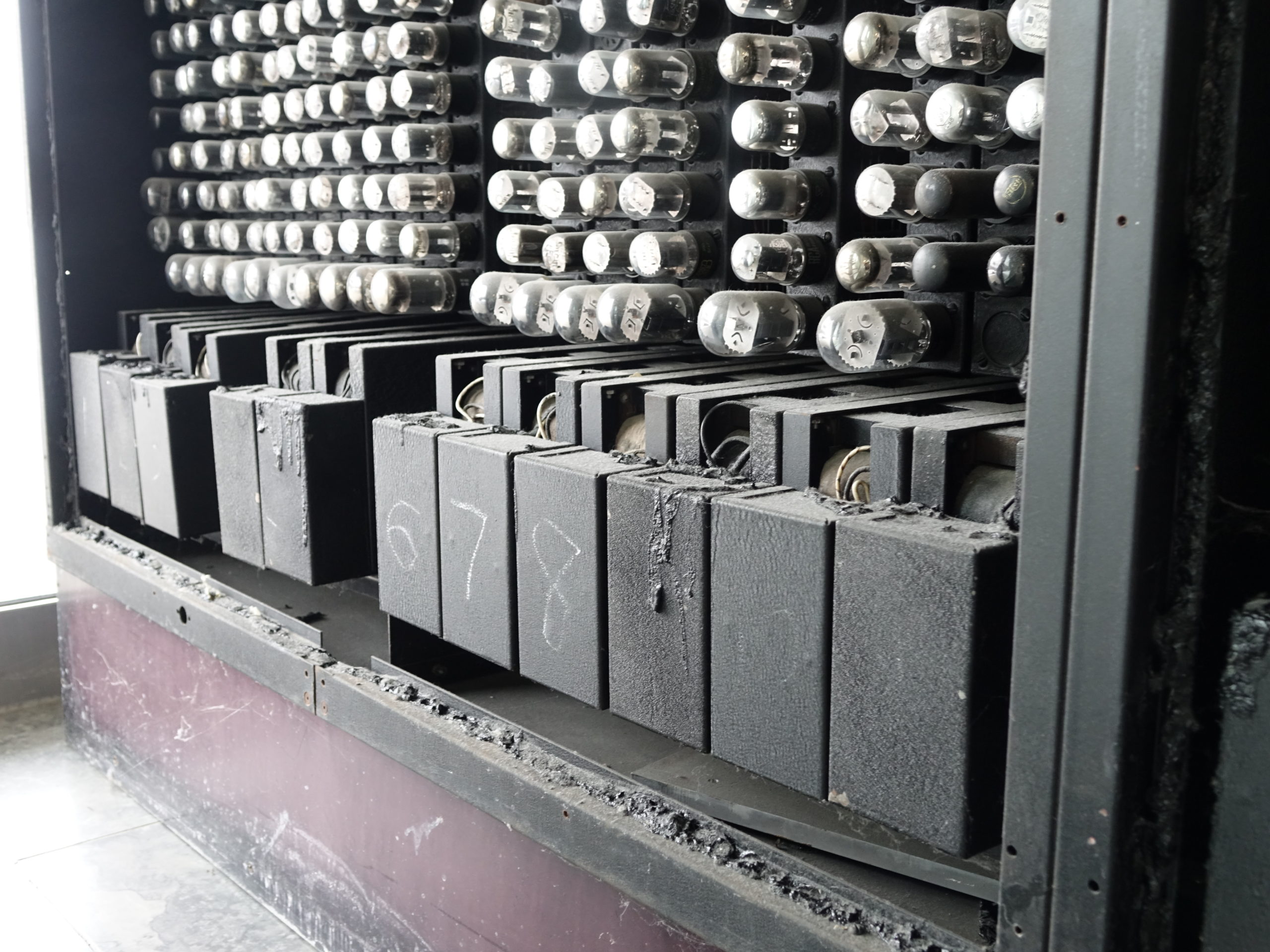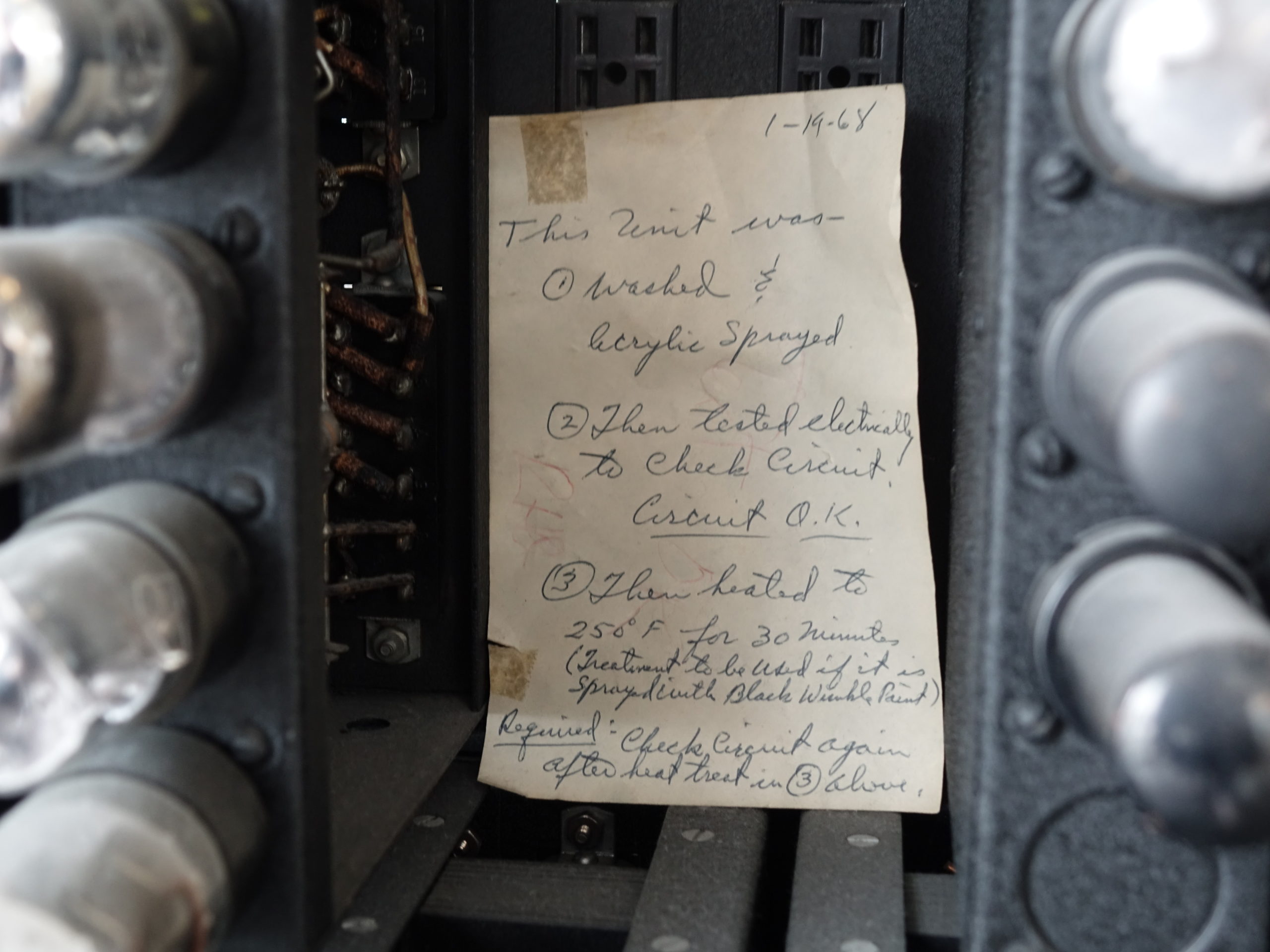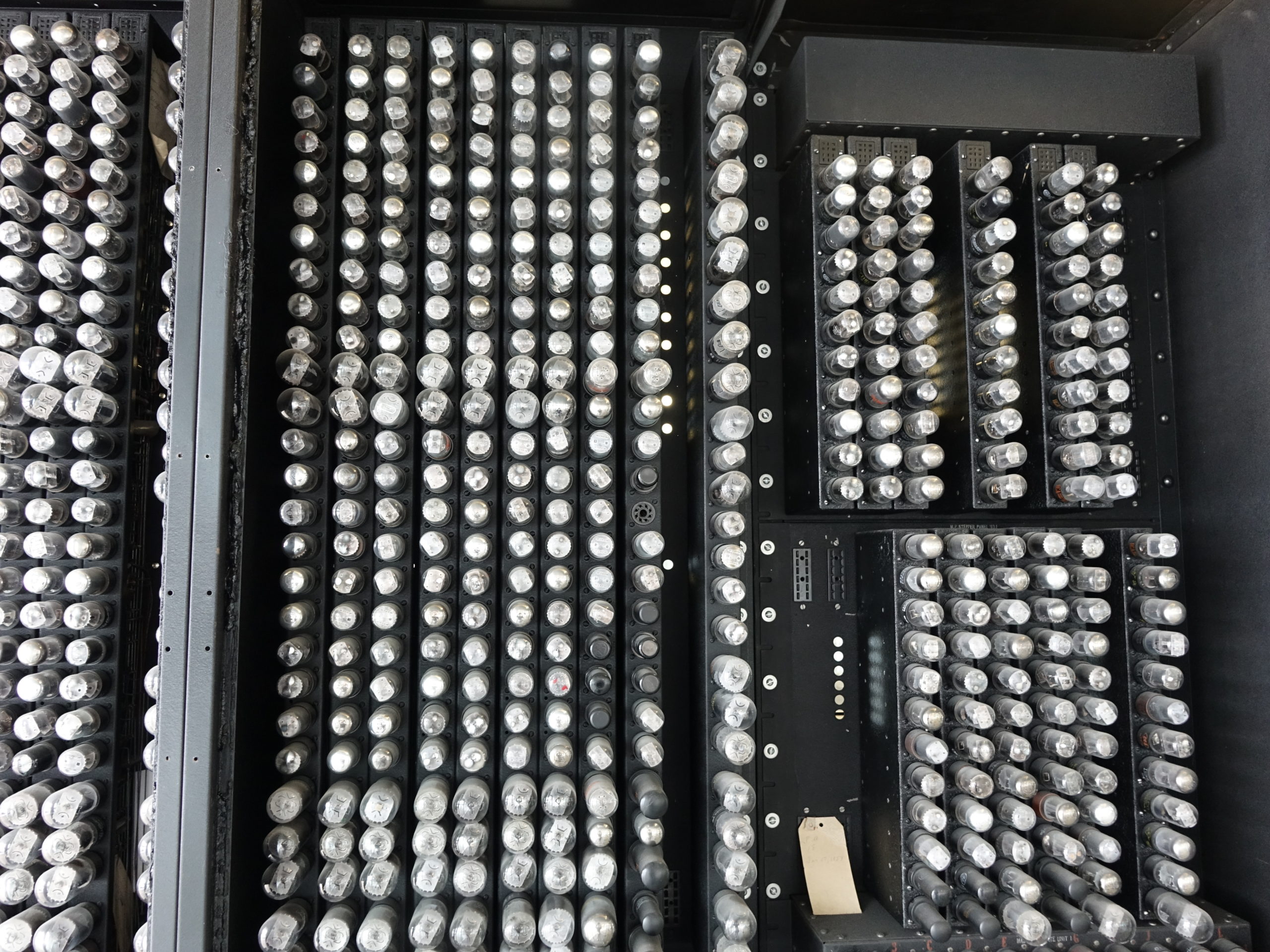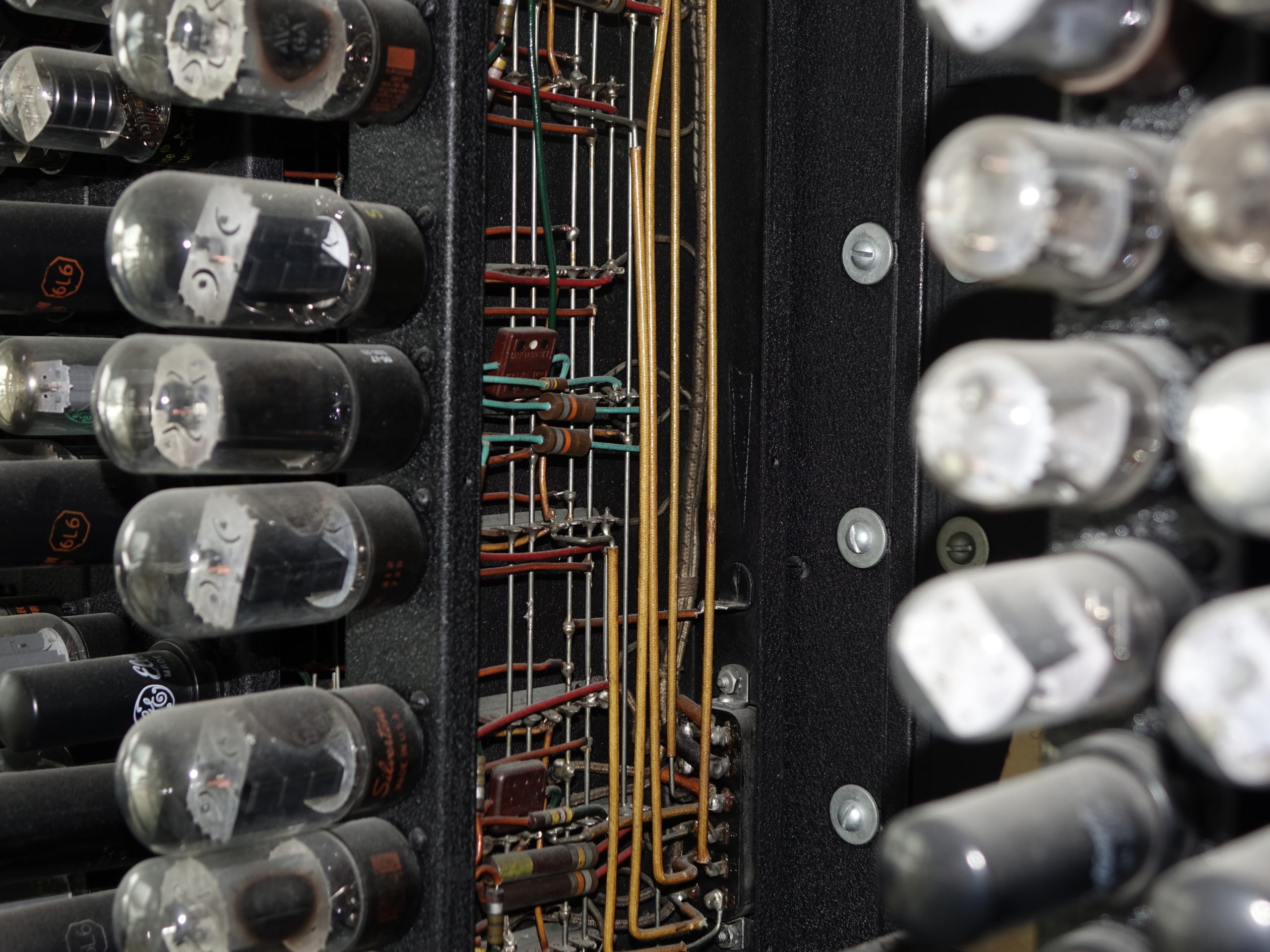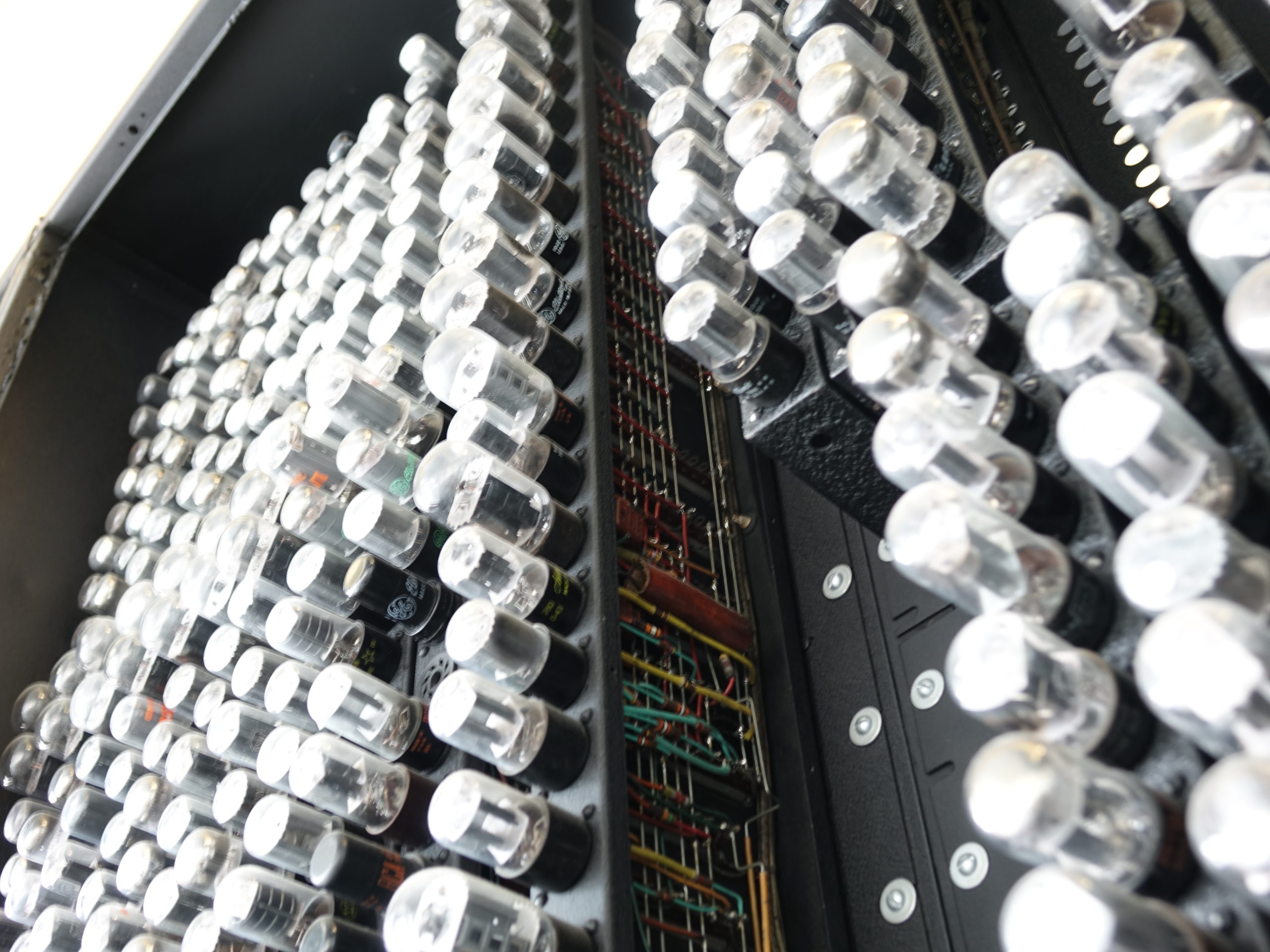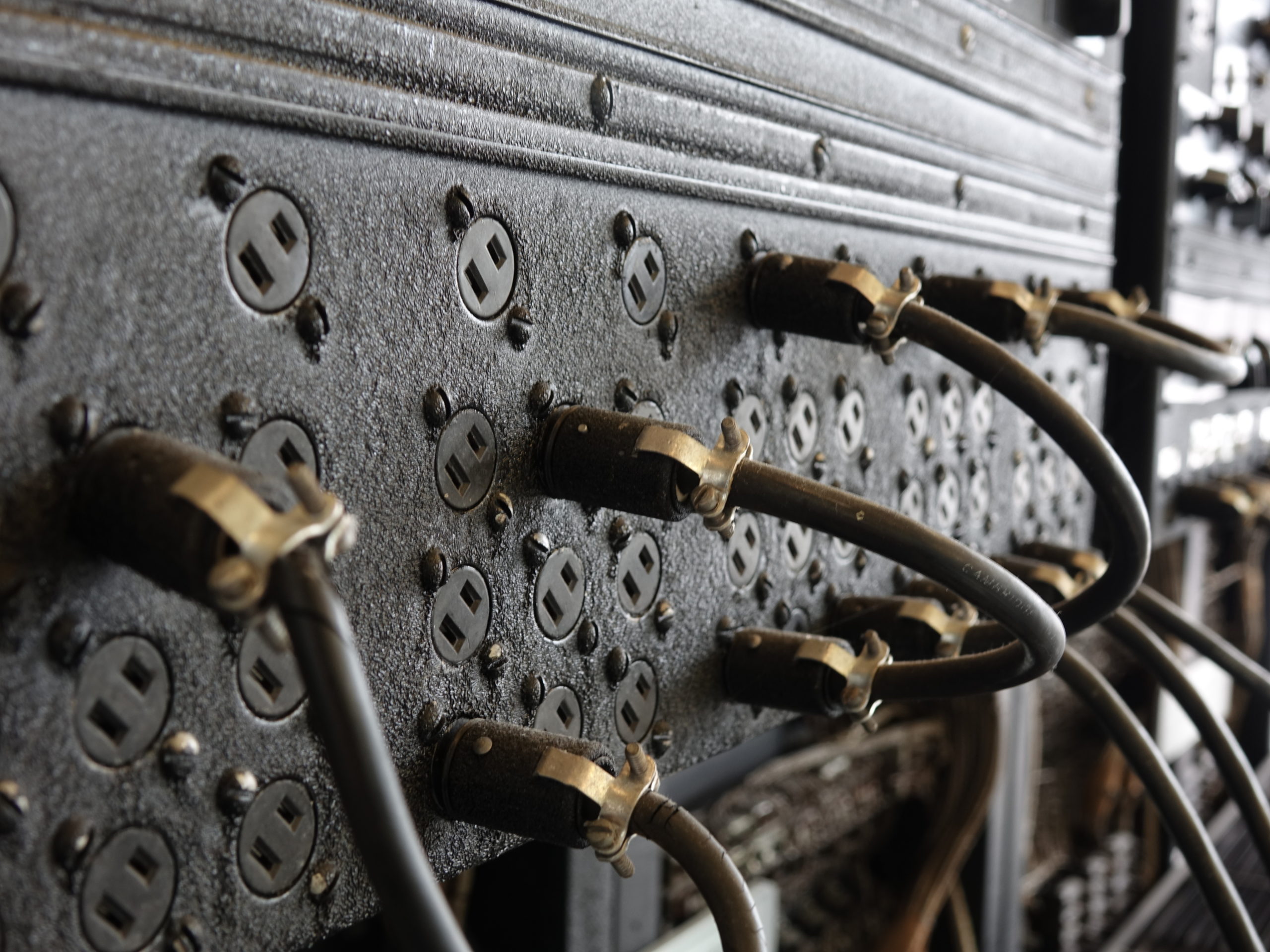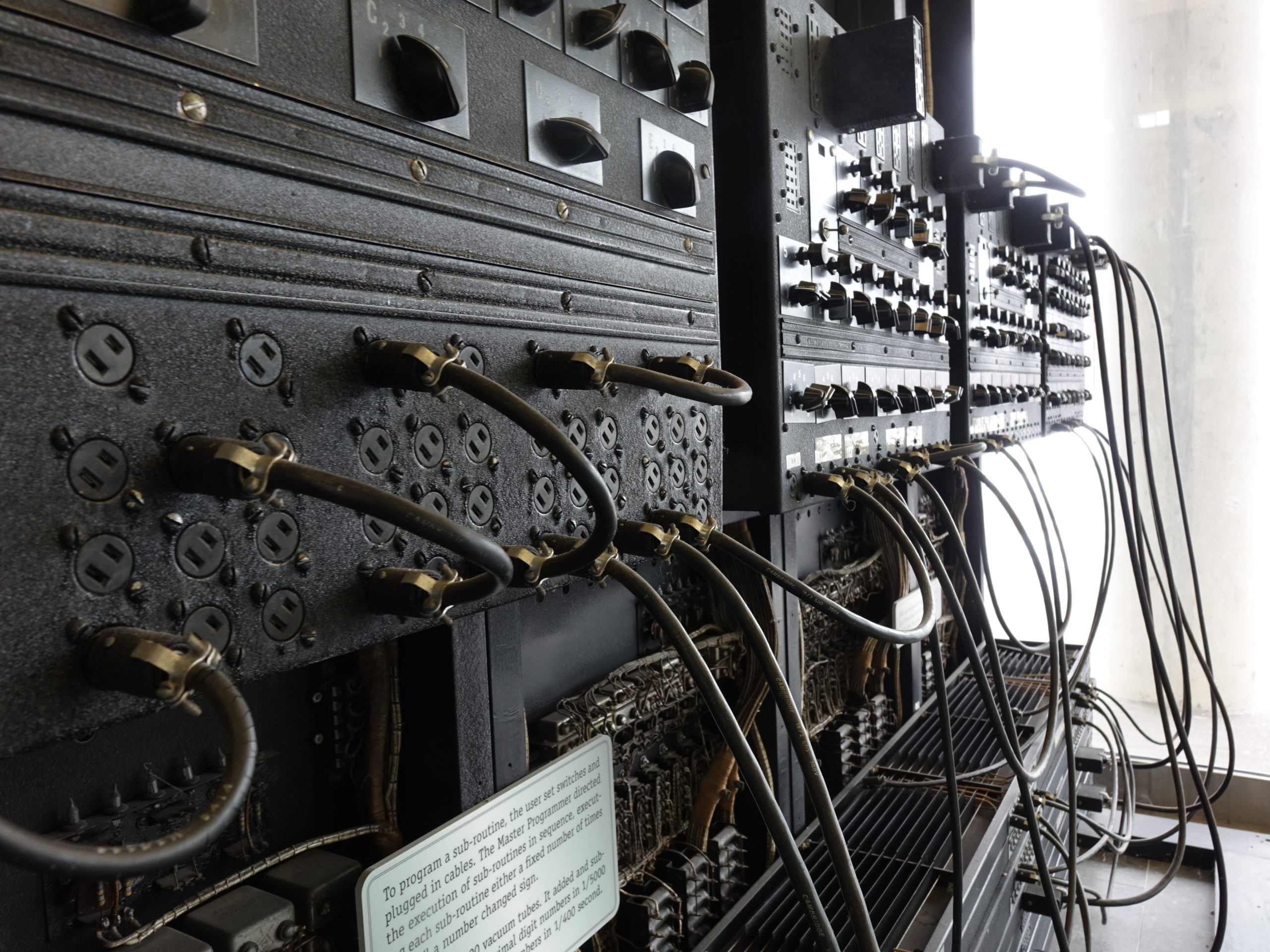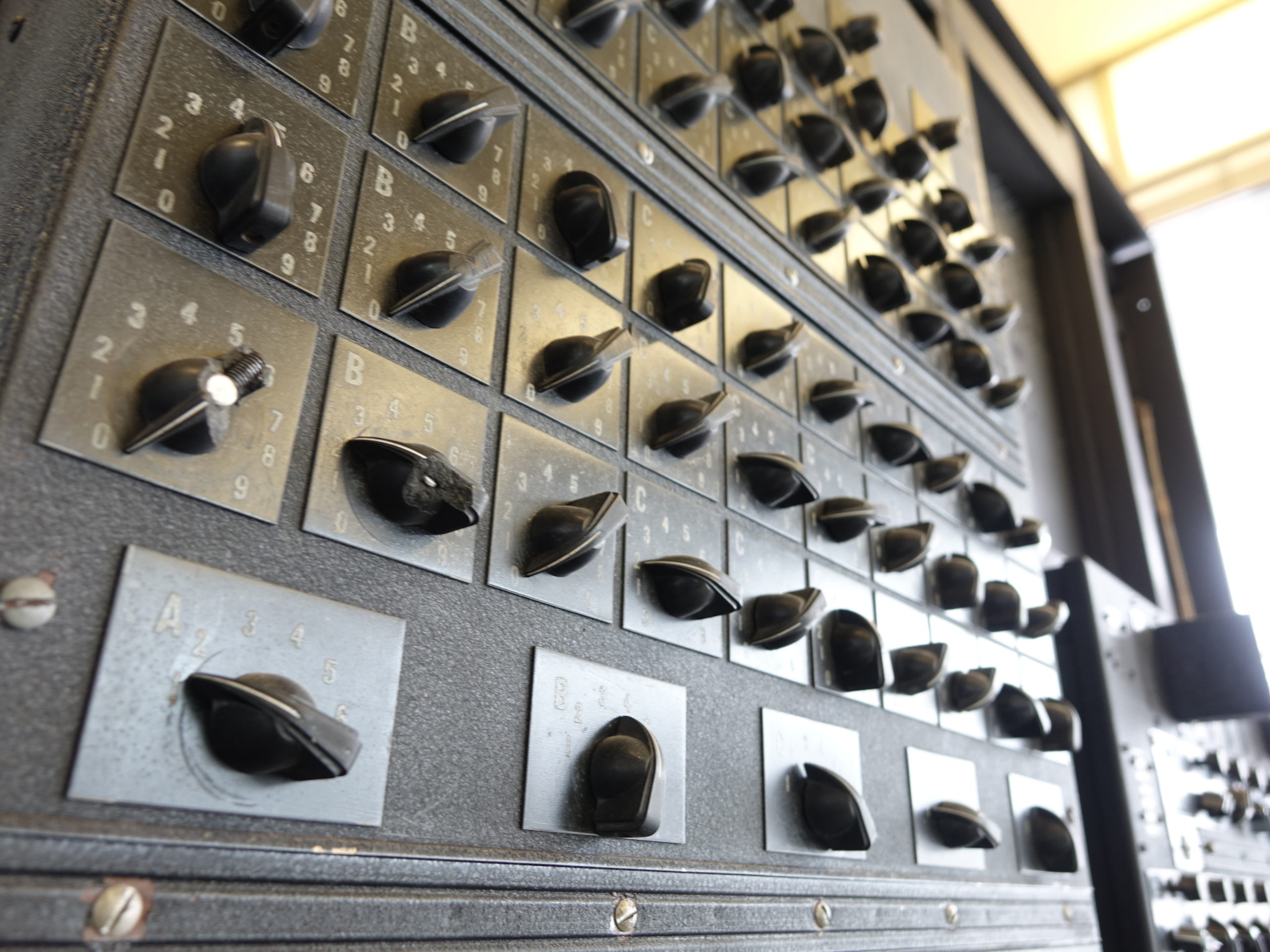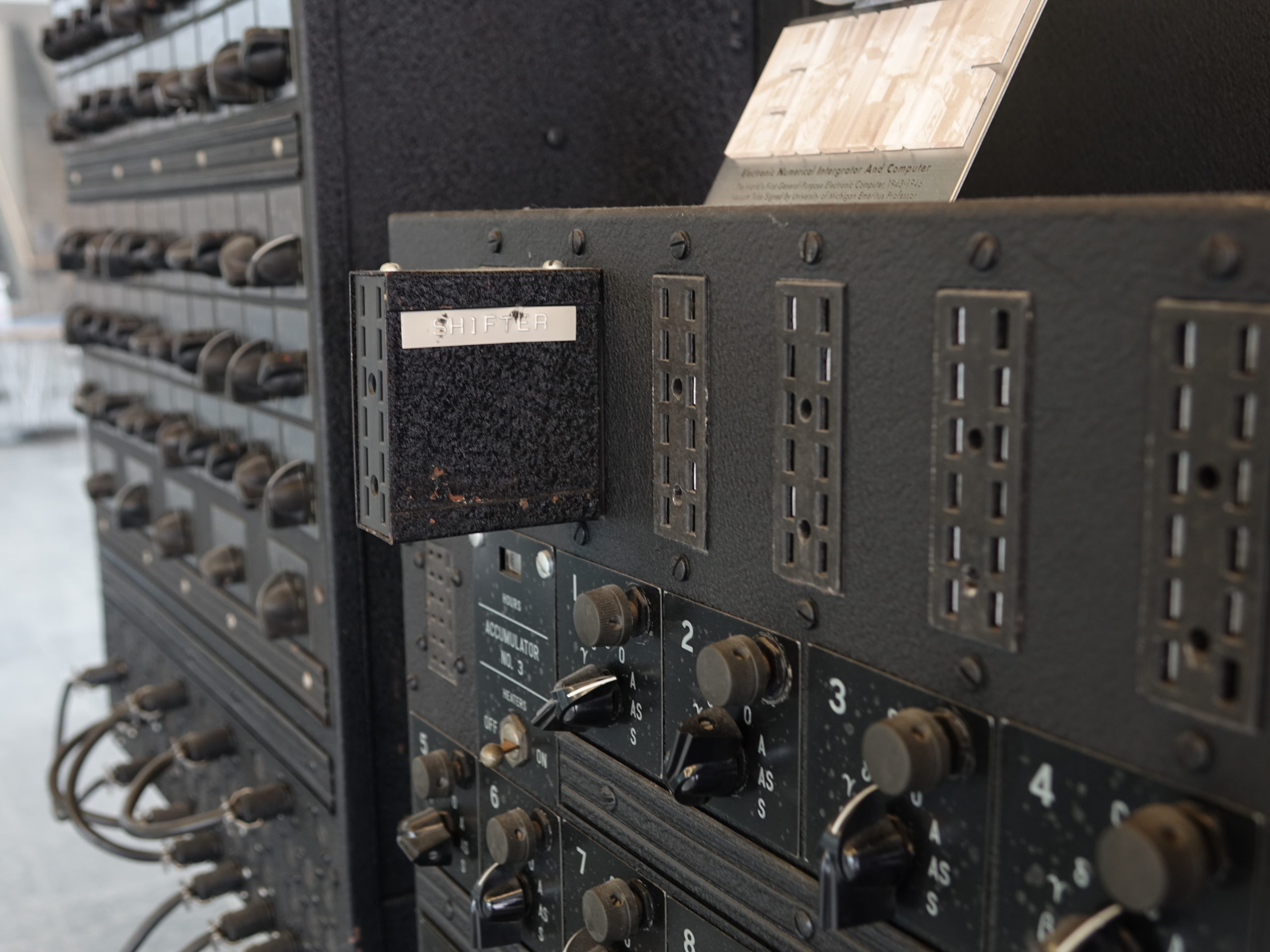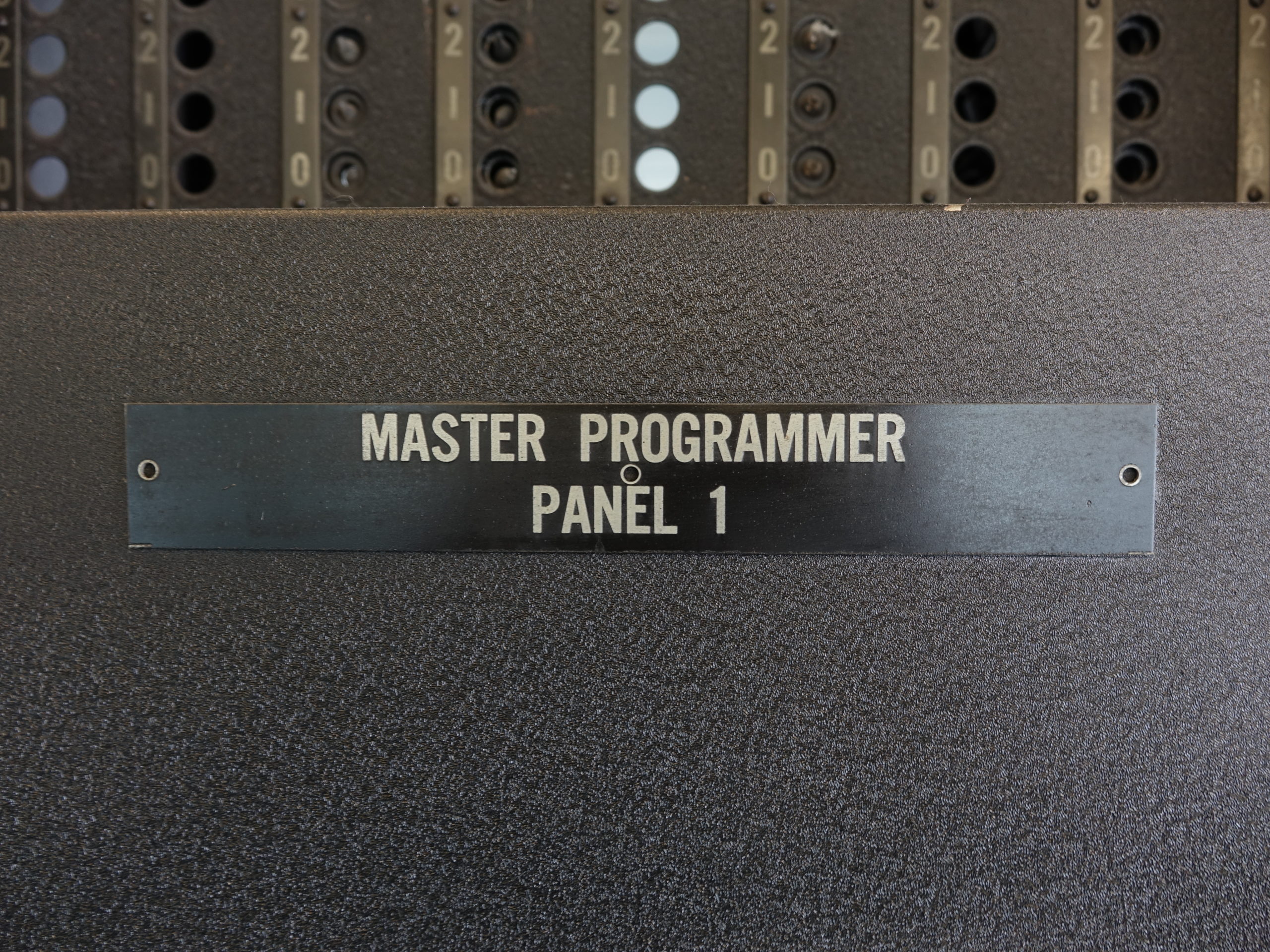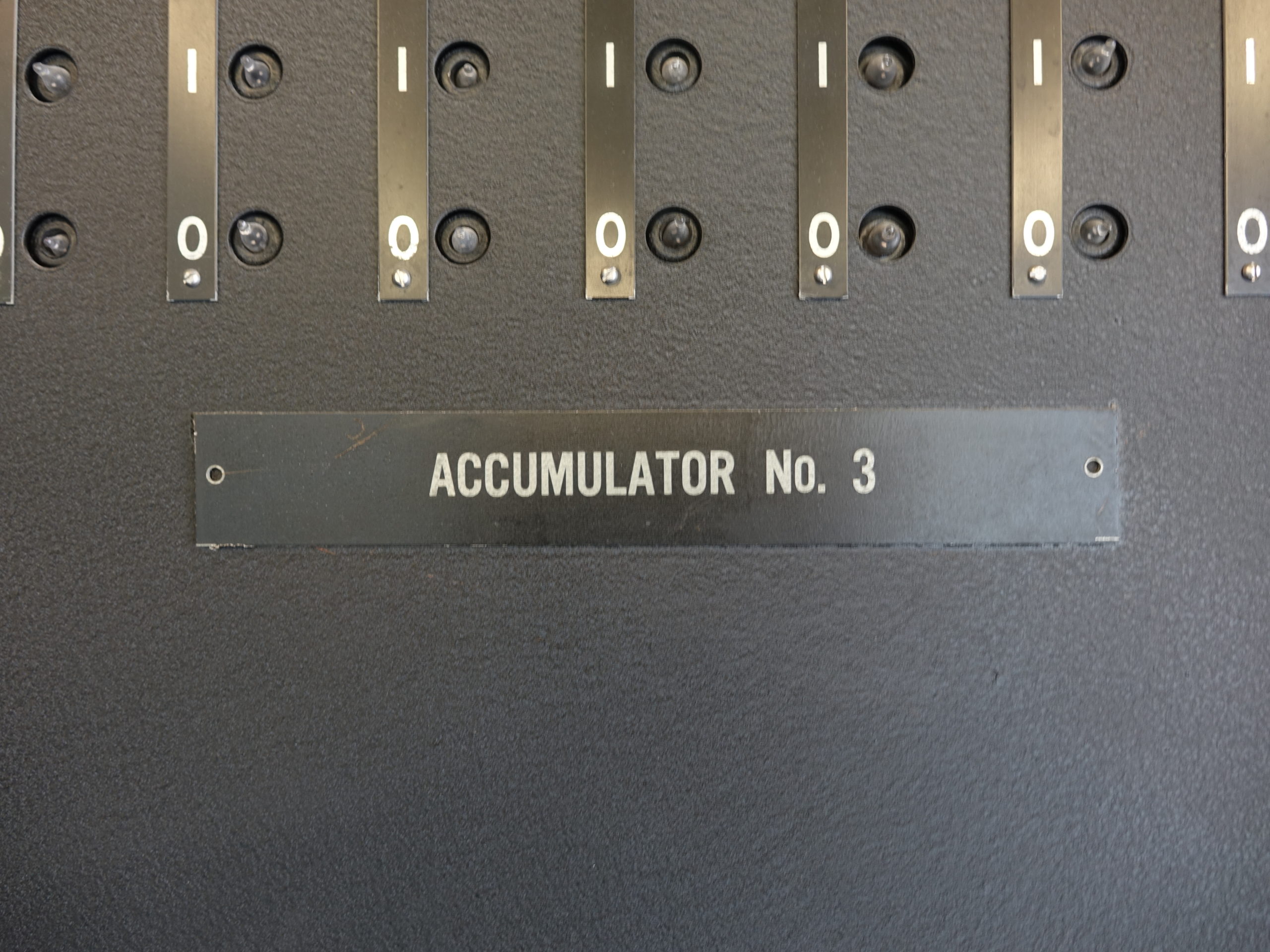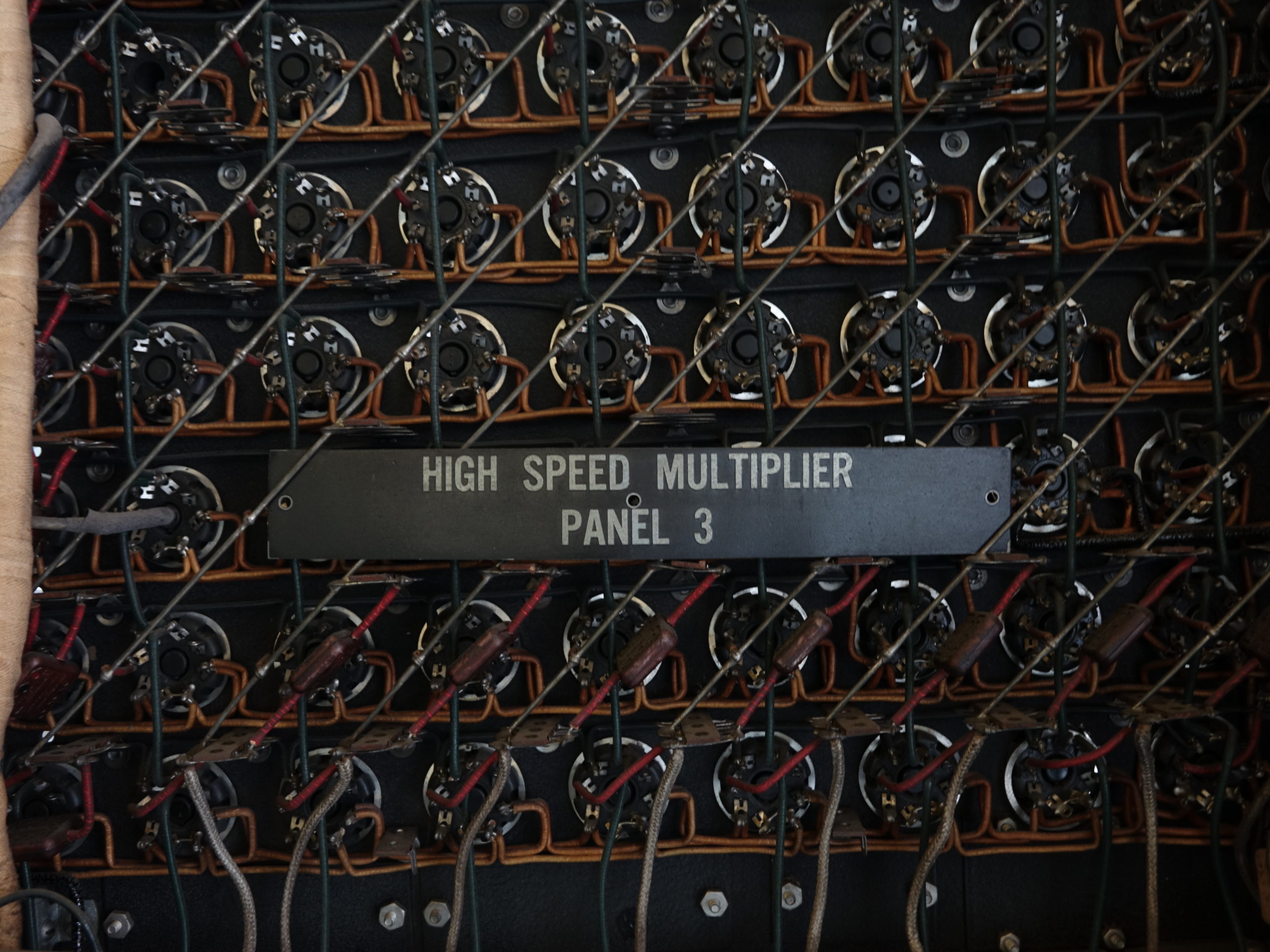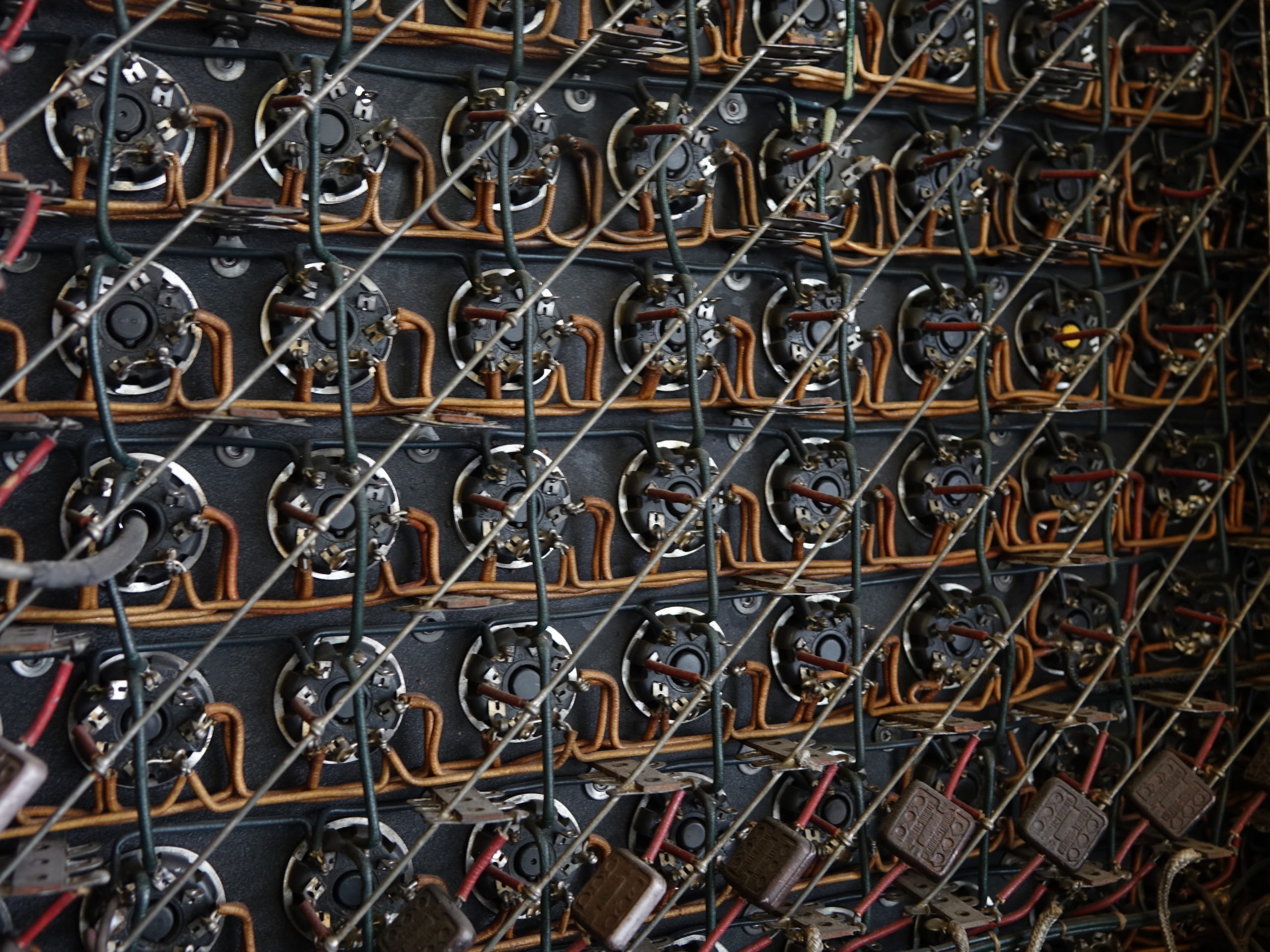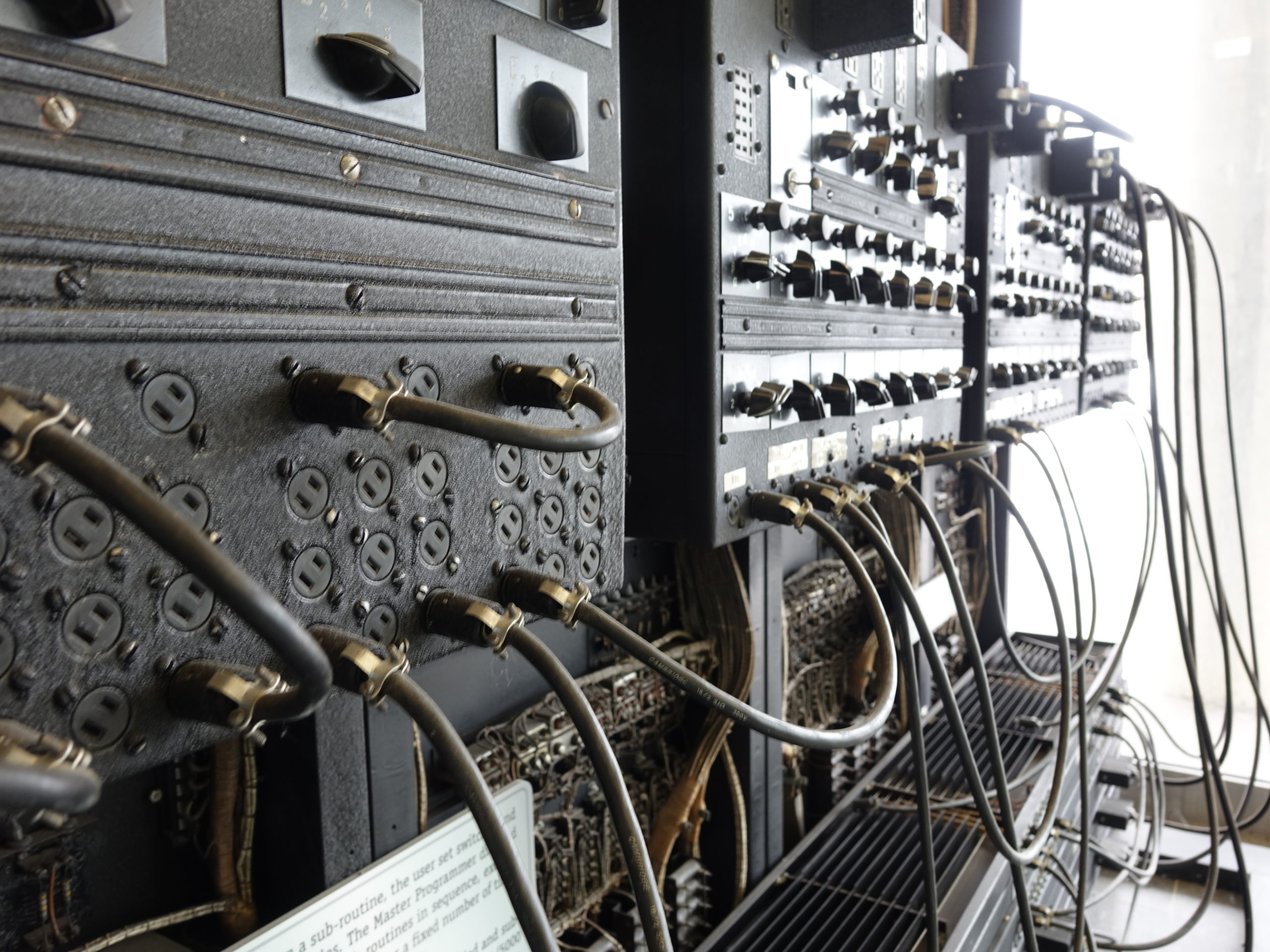ENIAC Display
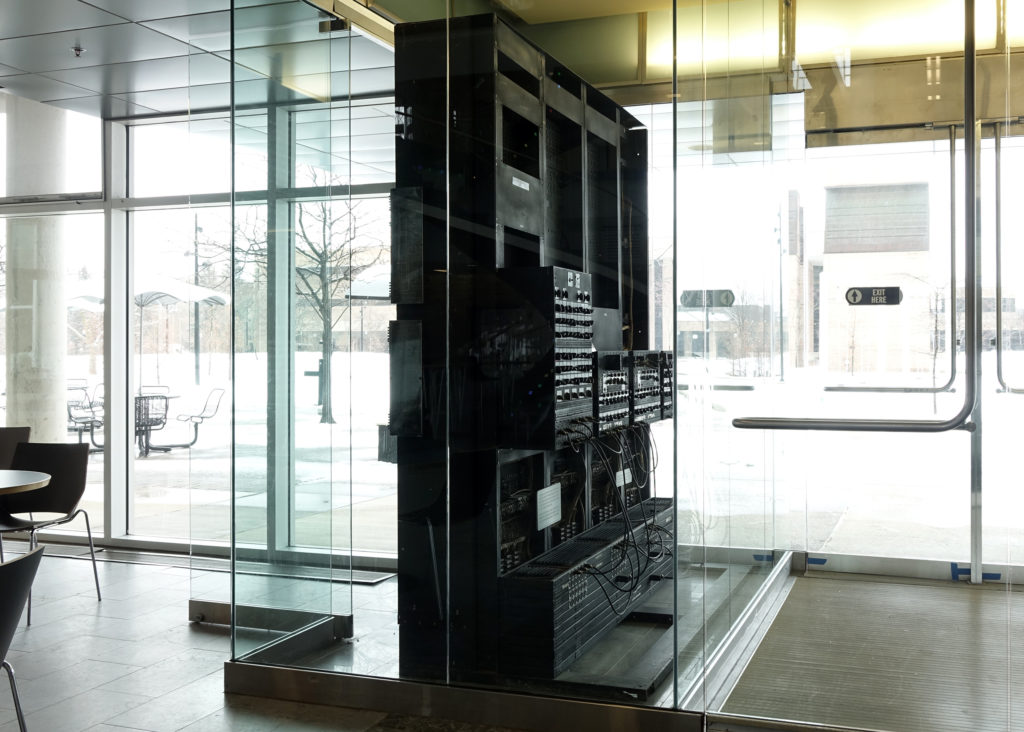
On display at the Beyster Building is a portion of the Electronic Numerical Integrator and Computer (ENIAC), the first general-purpose electronic digital computer capable of being reprogrammed to solve a range of computing problems.
The display includes four of the ENIAC’s original 40 panels; it is one of three significant standing displays remaining of the ENIAC.
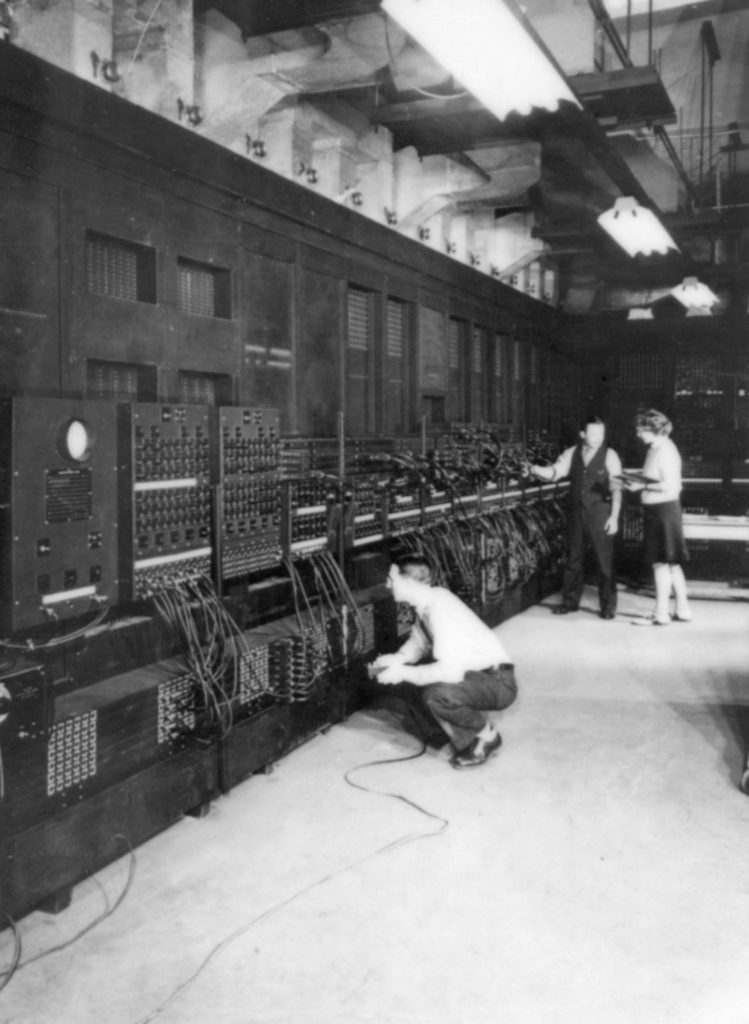
The ENIAC was conceived and designed by John Mauchly and J. Presper Eckert of the University of Pennsylvania. The team of design engineers assisting the development included Arthur Burks, who received his Ph.D. from the University of Michigan in 1941 and later co-founded the U-M program in computing in 1957. Burks’ chief contribution was the design of the Master Programmer, one panel of which is the leftmost in the exhibit.
The development of the ENIAC was financed by the U.S. Army as a secret project during World War II. Its purpose was to solve the differential equations that described the trajectory of a shell in flight, electronically and with unprecedented speed.
The ENIAC was designed and constructed at the University of Pennsylvania between 1943 and 1946 and was officially unveiled to the public on February 14, 1946. Press releases from the War Department and articles that appeared in popular magazines, such as Newsweek, attest to the widespread attention that the ENIAC received upon its public dedication.
Not mentioned at the unveiling event was the team of six women who, having previously functioned as human “computers,” became the behind-the-scenes experts in charge of configuring and wiring the machine to perform specific computations, handling the punch card equipment, and debugging its operations.
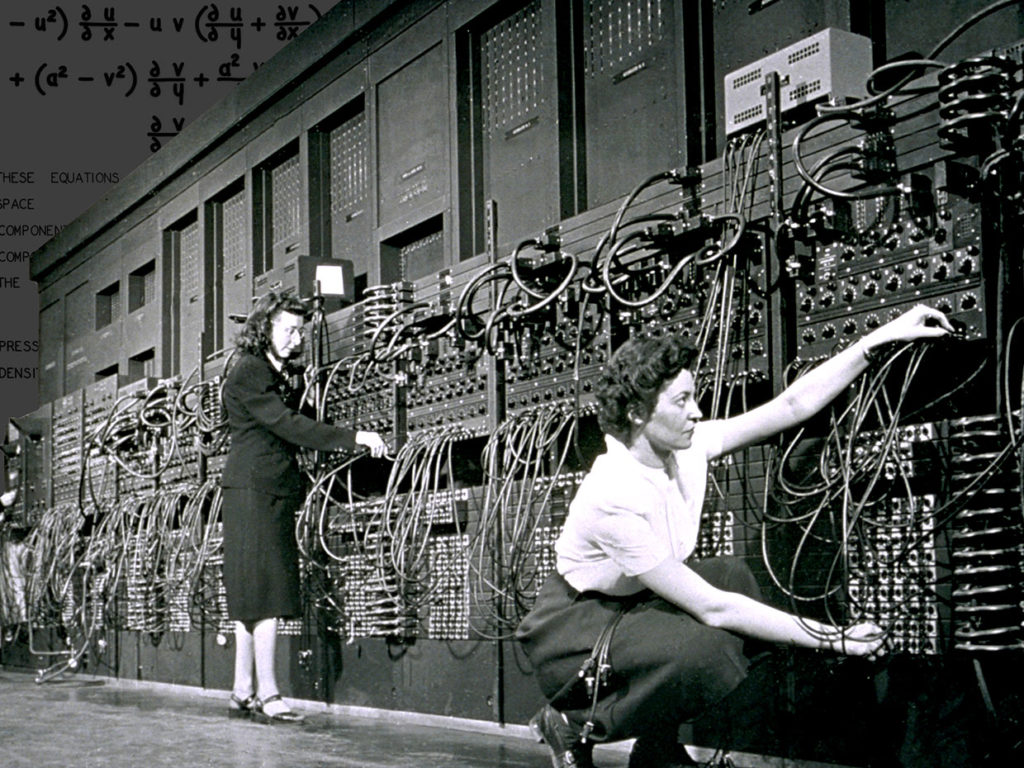
The ENIAC added and subtracted 10 decimal digit numbers in 1/5000 second, and multiplied numbers in 1/400 second. Besides its speed, the most remarkable thing about the ENIAC was its size and complexity. The ENIAC was composed of 40 panels and contained 17,468 vacuum tubes, 7,200 crystal diodes, 1,500 relays, 70,000 resistors, 10,000 capacitors and around 5 million hand-soldered joints. It weighed more than 27 tons, took up 1800 square feet, and consumed 150 kW of power. It operated until 1957.
The panels in this display were acquired from the Army by Burks and refurbished at the University of Michigan in 1964. The display moved to the Beyster Building in January 2006, when the building opened. The CSE Division is grateful to the late Professor Emeritus Arthur Burks, who passed away on May 14, 2008, for having procured and retained these ENIAC components, selected by him to capture the essence of that revolutionary machine.
Other standing displays of the ENIAC of significance are located at the US Army Field Artillery Museum and at the University of Pennsylvania. The Smithsonian has also preserved portions of the ENIAC, some of which are on loan to other institutions.
 MENU
MENU 

